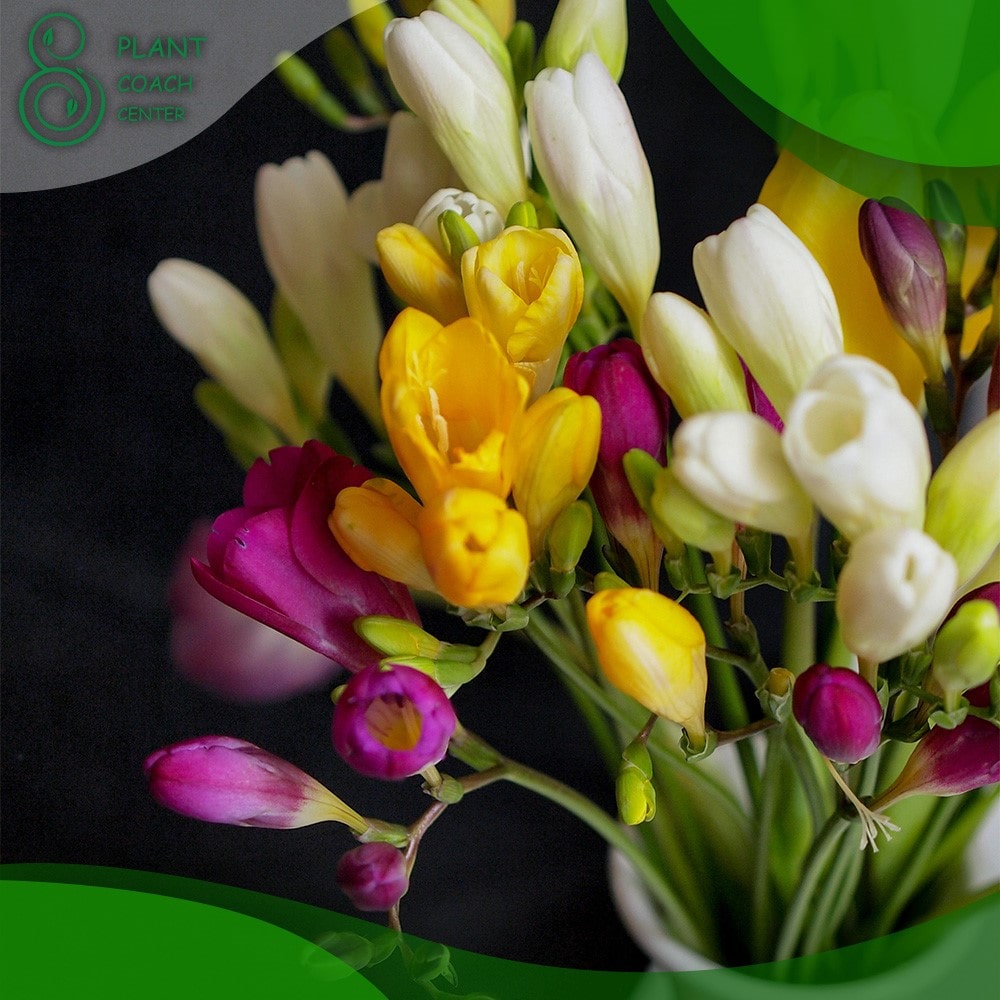When Do You Plant Freesia Bulbs?
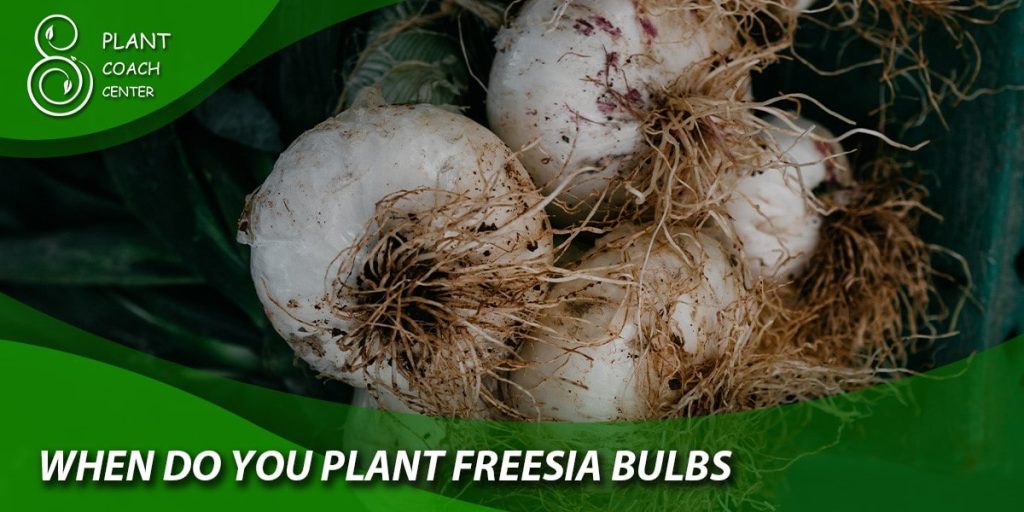
Welcome to the world of floral enchantment, where nature’s palette comes alive through the delicate and captivating freesia blooms. If you’re a gardening enthusiast eager to infuse your surroundings with bursts of vibrant colors and a mesmerizing fragrance, understanding the art of planting freesia bulbs is your gateway to this botanical wonderland. Freesias, renowned for their elegance and allure, hold a timeless charm that has captured the hearts of gardeners and admirers alike.
The key to a successful freesia spectacle lies in the blossoms themselves and the timing of their planting. As we embark on a journey through the seasons, this article will unravel the mystique surrounding the optimal moments to plant freesia bulbs.
Whether you’re a seasoned horticulturist seeking to refine your timing or a newcomer eager to grasp the fundamentals, join us as we explore the symphony of nature’s rhythm and the dance of patience and reward that accompanies planting freesias at the perfect time.
Unlocking the Seasons: Perfect Timing for Planting
In gardening, timing is everything, and the art of planting freesia bulbs is no exception. The journey begins with an understanding of the distinct seasons and their influence on the growth cycle of these captivating flowers. Each season offers a unique set of conditions that can significantly impact the success of your freesia planting venture.
Spring: Nature’s Awakening Canvas
As the frost of winter gives way to the gentle caress of spring, gardeners and nature enthusiasts rejoice in the landscape’s rebirth. Spring is undoubtedly the prime time to plant freesia bulbs. With soil temperatures gradually warming and the sun reclaiming its dominance in the sky, freesias awaken zealously.
Planting in early spring allows the bulbs to establish their roots and settle into their new home, resulting in robust growth and a splendid display of blooms as the season progresses.
Summer: Strategic Late Planting
While spring is the preferred planting window, those who missed the early boat need not despair. Summer can still offer a strategic opportunity for late planting, especially in regions with milder climates. By choosing a location with partial shade, you can mitigate the intensity of the summer sun’s heat and encourage the freesia bulbs to develop without undue stress. With diligent watering and care, these late-planted freesias can surprise you with their late-season beauty.
Fall: Looking Ahead to the Next Act
As summer’s warmth gradually fades into the crisp embrace of fall, forward-thinking gardeners can start planning for the following year’s freesia spectacle. In regions where winters are mild, planting freesia bulbs in the fall can provide an early jumpstart on spring blooms.
The bulbs go dormant during the colder months, building up energy for their dazzling debut when the weather warms. A fall planting strategy requires a deep understanding of your local climate and a touch of anticipation for the floral symphony that awaits.
Winter: Indoor Oasis of Beauty
For those in colder climates where winter’s chill lingers, don’t let the frost deter you. You can create an indoor haven of freesia beauty by forcing the bulbs to bloom indoors. By planting the bulbs in pots and allowing them to chill for a period before bringing them indoors, you can coax the freesias to bloom and grace your home with their charm, even when the world outside is wrapped in winter’s embrace.
Freesia Feasts: Aligning with Nature’s Rhythms
In the world of plants, a profound connection exists between their growth patterns and the rhythms of nature. With their delicate beauty and captivating fragrance, Freesias epitomize this relationship, offering a symphony of colors that dance to the beat of the seasons. Understanding and aligning with these natural rhythms is critical to unlocking the true potential of freesia bulb planting.
Embracing Dormancy: A Season of Rest and Renewal
Like many plants, Freesias have a period of dormancy—a time when their growth seems to pause. This phase, often during the colder months, allows the bulbs to gather energy for the vibrant display they will unfurl in due time. It’s essential to respect this period and avoid disturbing the bulbs during their rest. This aligns with nature’s wisdom of rest and renewal, ultimately contributing to the plant’s overall health and longevity.
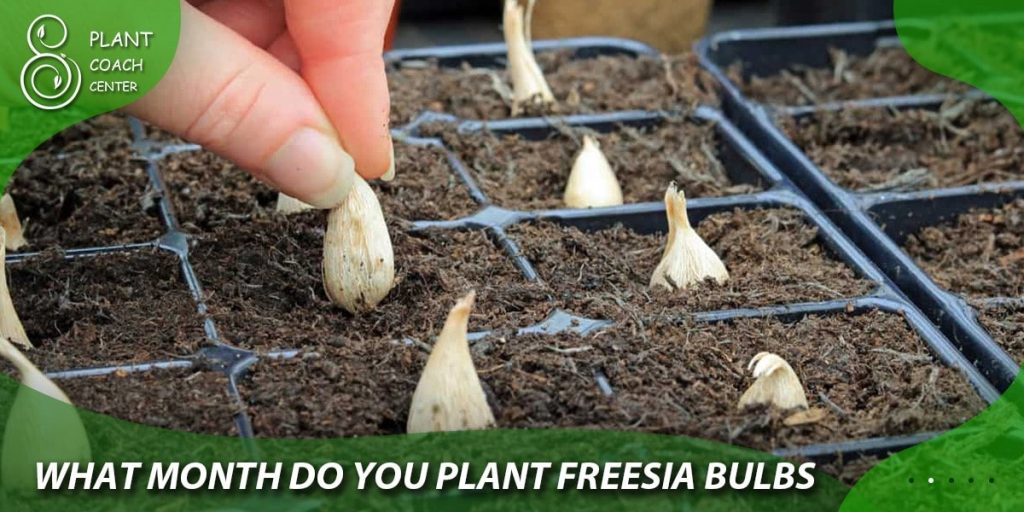
Spring’s Awakening: Planting for the Burst of Life
When the first signs of spring emerge, nature awakens from its slumber, and so do freesias. Planting the bulbs during this time harmonizes with the natural cycle of growth. As the soil warms and the sun’s intensity increases, freesias respond enthusiastically, sending shoots upward and roots deeper into the earth. By tapping into this surge of vitality, gardeners ensure that the freesias flourish with energy, producing sturdy stems and vibrant blooms.
Synchronizing with Sunlight: A Dance of Energy
Sunlight acts as nature’s conductor, directing the growth symphony of plants. For freesias, exposure to ample sunlight is crucial. Choosing a planting spot that receives adequate sunlight allows the bulbs to absorb the energy required for photosynthesis, which fuels their growth and flower production. This synchronization with sunlight’s rhythm ensures the freesias put on a show-stopping performance of colors and scents.
Watering Wisely: Mimicking Nature’s Raindance
Just as nature provides rain in measured doses, replicating this pattern in your watering routine is paramount. Freesias prefer well-draining soil that retains moisture without becoming waterlogged. By aligning your watering schedule with the natural ebb and flow of rainfall, you prevent overwatering or underwatering, which can harm the bulbs’ health. This synchronization with nature’s Raindance nurtures healthy roots and vibrant blooms.
Harvesting Energy: The Art of Deadheading
As the freesia blooms reach their peak and start to fade, the plant shifts its energy from producing flowers to fortifying the bulbs for the next growing season. By practicing the art of deadheading—removing spent flowers—you’re aiding the plant in directing its resources toward bulb development. This action aligns with nature’s inclination to conserve energy and resources for future growth cycles.
Springing to Life: Capitalizing on Spring Planting
With the arrival of spring, the world awakens from its winter slumber, and gardens burst into a vibrant tapestry of colors. This season of renewal isn’t just a delight for the eyes—it’s the perfect time to embark on your freesia planting journey. Capitalizing on spring planting sets the stage for a stunning display of freesia blooms that capture the essence of this magical season.
Seizing the Golden Opportunity
Spring planting offers a golden opportunity to synchronize with nature’s grand revival. As the temperatures rise and daylight extends its embrace, the soil begins to warm, signaling that it’s time for plants to awaken from dormancy. Freesia bulbs planted in early spring take advantage of this favorable environment, allowing their roots to establish and their shoots to emerge with vigor.
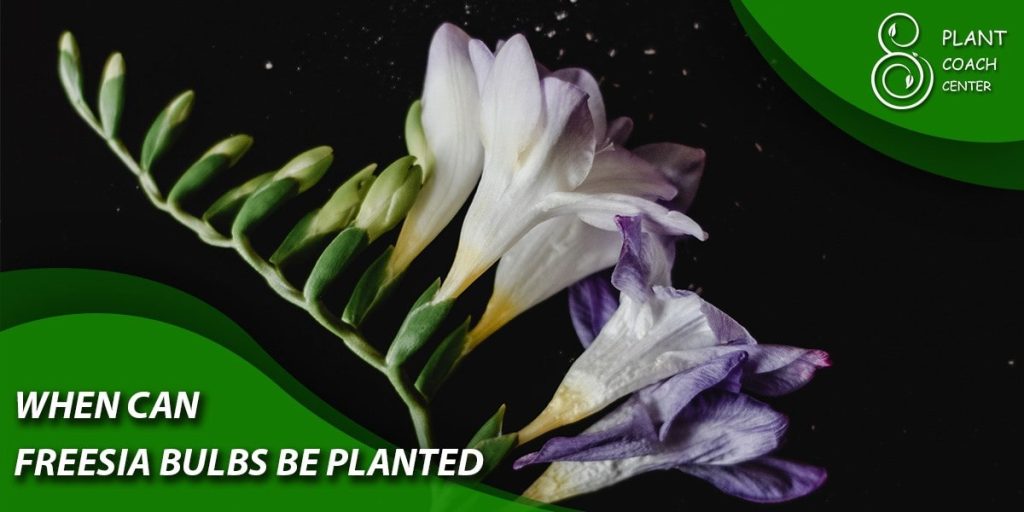
The Dance of Sunlight and Growth
One of the most captivating aspects of spring is the renewed presence of sunlight. Freesias thrive in well-lit conditions, and spring’s longer days provide the perfect stage for their photosynthesis-powered growth. Choosing a location that receives ample sunlight enables the bulbs to convert energy into nutrients, resulting in robust stems and vibrant blooms that mirror the sun’s radiance.
A Symphony of Color and Fragrance
Imagine your garden transformed into a symphony of color and fragrance, with freesia blooms offering an array of hues and an intoxicating scent that wafts through the air. By planting in spring, you’re not just ensuring healthy growth but setting the scene for a floral masterpiece that defines the season’s essence. Freesias, known for their charming appearance and sweet aroma, embody the spirit of springtime.
Harmonizing with the Ecosystem
Spring is a season of balance and harmony in the ecosystem. As nature’s inhabitants awaken from hibernation, they engage in a delicate dance of pollination and symbiosis. By introducing freesias to your garden during this time, you contribute to this intricate web of life. Freesias attract pollinators like bees and butterflies, fostering a sense of interconnectedness that mirrors the harmony of the season.
Spring Planting: A Prelude to Splendor
PerhaOnehe most enchanting aspect of spring planting is the sense of anticipation it brings. As you place each freesia bulb into the soil, you’re sowing the seeds of a story that will unfold throughout the season. The delicate green shoots that emerge are a promise of the colorful blooms that will follow—a prelude to the splendor that awaits, reminding us that patience and nurturing care lead to the most rewarding outcomes.
Freesia Forecast: Navigating Weather and Climate Factors
In the intricate gardening world, success often hinges on our ability to adapt and respond to the ever-changing whims of weather and climate. Understanding and navigating these factors is essential for fostering robust growth and breathtaking blooms when planting freesia bulbs. Just as a seasoned captain reads the seas for a smooth voyage, a knowledgeable gardener reads the weather for a flourishing garden.
Zone Wisdom: Mapping Your Climate
Before delving into planting freesia bulbs, take a moment to acquaint yourself with your plant hardiness zone. This invaluable tool divides geographical regions into zones based on average annual minimum temperatures. Knowing your site, you can determine the types of plants that will thrive in your climate, including the optimal planting times for freesias. Consult a plant hardiness zone map to ensure your freesias are given the best chance to succeed.
Temperature Tales: The Goldilocks Principle
Temperature fluctuations play a pivotal role in a freesia’s growth journey. Planting too early in spring, when the soil is still chilly, can delay growth, while growing too late exposes the bulbs to the sweltering heat of summer. The Goldilocks principle applies here—finding the “just right” temperature range ensures that the freesia bulbs establish their roots without undue stress. Monitor the weather forecast and aim for stable, moderate temperatures for a smooth start.
Rainfall and Drainage: Balancing Act
Rainfall and soil drainage are crucial considerations for freesias. While these bulbs appreciate moisture, they detest standing water that leads to rot. If your region experiences heavy rainfall, choose a well-draining planting location to prevent waterlogged soil. If your area faces dry spells, consider implementing a regular watering routine to maintain consistent soil moisture. Strike a balance miming nature’s cycles, promoting healthy root growth and lush blooms.

Frost Warnings: Guarding Against Cold Snaps
Freesias, with their delicate constitution, are susceptible to frost damage. Even if planted at the optimal time, a surprise late frost can prove detrimental. Stay vigilant, especially during transitional seasons, and be prepared to cover your freesias with protective clothes or sheets if frost warnings arise. This proactive approach safeguards your budding blooms and ensures the weather doesn’t disrupt the growth trajectory.
Microclimates: Unveiling Hidden Factors
Gardens often harbor microclimates—small pockets with unique weather conditions influenced by nearby structures, bodies of water, or slopes. These microclimates can impact the growth and survival of freesias. Observe your garden’s nuances, noting areas that receive more or less sunlight, heat, or wind exposure. Tailor your planting strategy accordingly, recognizing that weather patterns may reign.
Indoor vs. Outdoor: Tailoring Planting Strategies
Planting freesia bulbs indoors or outdoors is pivotal in your gardening journey. Each approach offers unique benefits and considerations, allowing you to tailor your planting strategy based on your goals, resources, and environment. Whether seeking early blooms, experimenting with microclimates, or simply embracing the joy of nurturing life, understanding the nuances of indoor and outdoor planting will guide you toward a flourishing freesia display.
Indoor Elegance: A Head Start on Beauty
Planting freesia bulbs indoors provides a head start on the growing season. By controlling the indoor environment, you can initiate growth earlier, resulting in blooms that grace your space ahead of their outdoor counterparts.
This approach is particularly enticing for those craving a burst of color and fragrance during the lingering winter days. Utilize pots or containers and position them in a bright, well-lit area to ensure your indoor freesias receive the light they need to thrive.
Outdoor Resilience: Nature’s Embrace
Planting freesia bulbs directly in your garden invites them to forge a symbiotic relationship with the natural world. While the timeline for outdoor blooms might be slightly delayed, this approach aligns with the bulbs’ natural growth patterns.
Freesias planted outdoors acclimate to the gradual transition of seasons, resulting in hardier, more resilient plants in harmony with their surroundings. Choose a sunny, well-drained spot for optimal results.
Transition Zones: The Best of Both Worlds
If you consider the transition zone strategy in a region with unpredictable weather or extreme temperature fluctuations, consent by planting freesia bulbs indoors or in containers that can be easily moved outdoors once the weather stabilizes.
This approach offers flexibility, allowing you to protect your bulbs from unexpected frost or provide them with a cozy indoor haven when conditions become harsh. Transitioning your bulbs gradually from indoor to outdoor environments eases their adjustment and promotes healthy growth.
Microclimates Unveiled: Indoor Experimentation
Indoor planting enables you to create microclimates within your home, experimenting with different lighting, temperature, and humidity levels. This can be particularly beneficial if you aim to mimic specific outdoor conditions or growing freesias in a region with vastly different climate requirements. Observing how your indoor freesias respond to varying needs equips you with valuable insights that can be applied to outdoor gardening endeavors.
Balancing Act: Tailoring to Your Lifestyle
Choosing indoor and outdoor planting also depends on your lifestyle and commitments. Indoor planting might be more manageable for those with limited outdoor space or who prefer a controlled environment.
On the other hand, if you relish the hands-on experience of tending to a garden bed and are eager to witness the dynamic interplay between freesias and their outdoor surroundings, an outdoor approach might be the perfect fit.
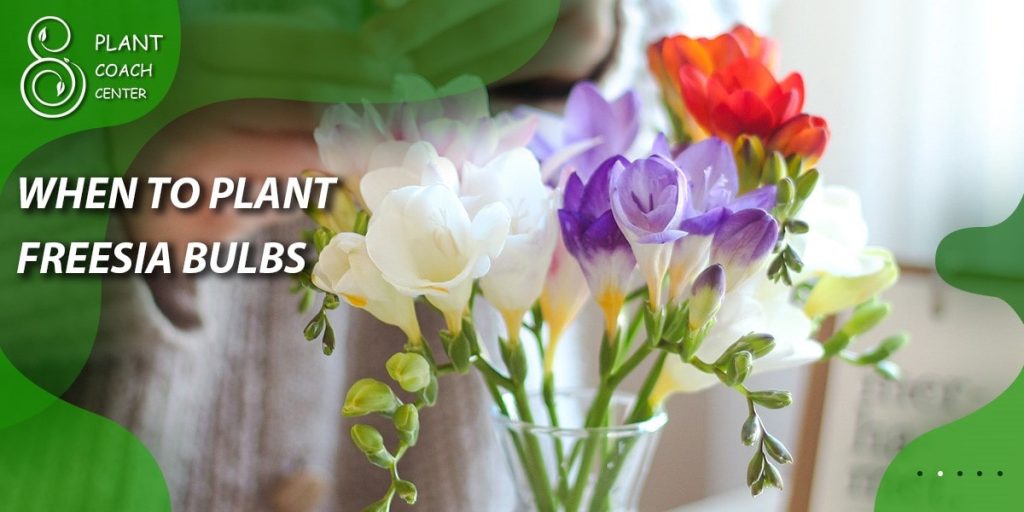
Extending the Beauty: Succession Planting Techniques
In gardening, the desire to prolong the beauty of blooms is a universal sentiment. Enter the art of succession planting—an ingenious technique that allows you to orchestrate a continuous display of freesia splendor throughout the flowering season. By strategically staggering your planting times, you can ensure that the charm of freesias graces your garden or indoor space for an extended period, transforming fleeting moments into a symphony of color and fragrance.
Timing is Everything: The Succession Planting Strategy
The essence of succession planting lies in mastering the art of timing. Rather than planting all your freesia bulbs at once, you carefully space out your planting sessions. By doing so, you stagger the growth and flowering stages, ensuring a consistent supply of fresh blooms over an extended period. This approach requires thoughtful planning, but the rewards are worth the effort as you enjoy a prolonged freesia spectacle.
Early, Mid, and Late Varieties: Creating Layers of Beauty
Select freesia varieties with different bloom times to implement a successful succession planting strategy. Early-blooming freesias are your first act, heralding the arrival of spring with their vibrant colors. Mid-season varieties step onto the stage as the season progresses, seamlessly continuing the show. Late-blooming freesias take the spotlight as other flowers fade, ensuring a grand finale that lingers well into the season’s twilight.
Layered Planting: Unveiling the Stages of Beauty
You create layers of freesia beauty in gardens or containers, creating bulbs at varying depths. Early-blooming bulbs can be planted more profoundly, while mid and late varieties are planted closer to the surface. This technique promotes a harmonious progression of blooms, allowing each sort its moment to shine. As early flowers gracefully bow out, their successors emerge seamlessly, captivating the eye and heart.
Successive Delights: Pacing Your Planting Sessions
Strategically placing your planting sessions is vital for succession planting success. Begin by planting your early-blooming freesia bulbs during the ideal timeframe for their growth. As they begin to establish themselves, plant your mid-season bulbs, ensuring that their change aligns with the natural progression of the season. Repeat the process with late-blooming bulbs, giving each variety the time and space it needs to thrive.
Constant Vigilance: Tending to Each Stage
As your succession planting unfolds, be attuned to the needs of each blooming stage. Provide adequate water, sunlight, and care tailored to the growth phase of the freesias. Regular deadheading of spent blooms maintains the visual appeal and directs the plant’s energy toward the development of new buds, prolonging the overall flowering period.
Conclusion
In the enchanting world of freesia bulb planting, we’ve unraveled the secrets of a thriving garden that dances harmoniously with nature’s rhythms. From seizing the opportune moment of spring to tailoring strategies for indoor and outdoor growth and embracing succession planting’s elegant artistry, our journey has been one of discovery and connection.
As you embark on your own freesia planting adventure, remember that the beauty of these blooms lies not only in their colors and scents but also in the stories they tell about patience, adaptation, and the vibrant dance of life. Whether you find solace in watching your indoor freesias bloom in winter, witness the outdoor garden awash in spring hues, or orchestrate a symphony of succession blooms, the stage is set for your masterpiece.
As you immerse yourself in the world of freesias, continue exploring the wealth of gardening wisdom at plantcouchcenter.com, where you’ll discover a trove of insights to inspire your green journey. Embrace the magic of freesias and let them be your companions in a journey of growth, beauty, and the ever-enticing wonders of the natural world.
Can I plant freesia bulbs in the summer?
You ant freesia bulbs in the summer, especially in milder climates. Choose a spot with partial shade to prevent heat stress.
How do I extend freesia blooms throughout the season?
Employ succession planting by staggering bulb planting times. Choose early, mid, and late-blooming varieties for a continuous freesia display.
Is indoor or outdoor planting better for freesia bulbs?
Both have merits. Indoor planting offers early blooms, while outdoor planting aligns with natural growth patterns. Choose based on your preferences and climate.


